By
Mark DiMassimo | 10/08/2020 | in
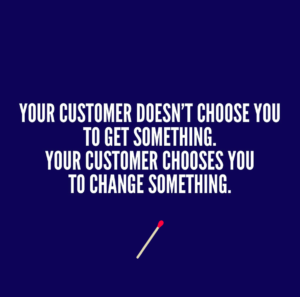
Warby Parker doesn’t sell eyeglasses.
Warby Parker sells a behavior change – a different way to buy eyeglasses.
Peloton Interactive doesn’t sell an exercise bike.
Peloton sells a behavior change – a way to make sure you exercise and keep exercising, no excuses.
Airbnb doesn’t sell rooms and apartments.
Airbnb sells a behavior change – a different way to travel.
Uber doesn’t sell rides.
Uber sells behavior change – a different way to get from here to there and a different way to earn a living too.
Dollar Shave Club doesn’t sell razors.
Dollar shave club sells a behavior change – a different way to buy razors.
HelloFresh doesn’t sell meal kits.
HelloFresh sells a behavior change – a way to make home cooking fit modern life.
Sun Basket doesn’t sell meal kits.
SunBasket sells a behavior change – a way to cook Paleo or Whole30 or Vegan…
Stitch Fix doesn’t sell clothes.
StitchFix sells behavior change – a totally different way to get yourself dressed.
If you’re in the direct-to-consumer business, you’re a behavior change marketer. Period.
Your customer doesn’t choose you to get something.
Your customer chooses you to change something.
You are in behavior change marketing.
Branding for behavior change is different.
Designing for behavior change is different.
Content for behavior change is different.
Advertising for behavior change is different.
Marketing for behavior change is different.
By
Mark DiMassimo | 03/14/2019 | in
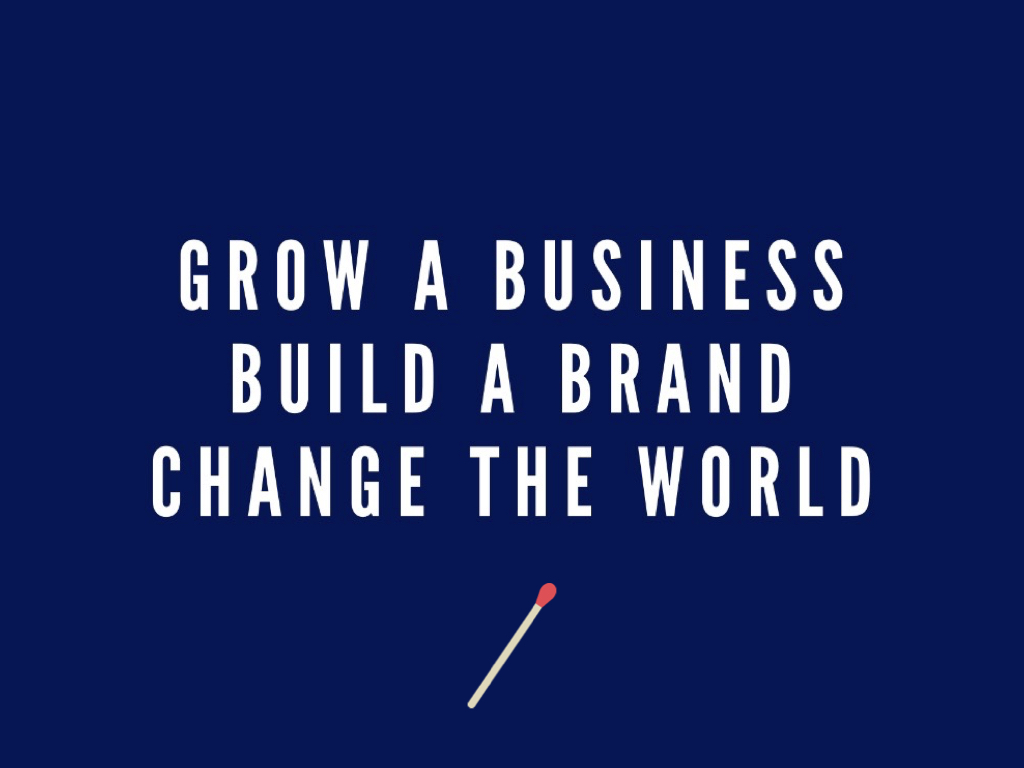
Let’s face it, we live in a world of behavior gone wrong.
Some see imminent apocalypse.
I see plenty of work for behavior change marketers and designers.
Opioid Crisis. Digital addiction. Inactivity. Unhealthy eating. Rising oceans. Uninspiring workplaces.
Pick your target. Go.
The problems that the world faces can only be solved with Behavior Change marketing and design. Growth and business success are behavior change marketing problems.
Growth problems can only be solved by behavioral solutions.
The process of behavior change marketing is simple. Determine the key performance indicators that support the growth theory for the business. Identify the behaviors that lead to those KPIs. Analyze the key behaviors along the customer journey, identifying gaps, drags and blocks.
Prioritize your design interventions. Describe the experience that will most likely transform behavior into habit for this brand.
Create experiences that will inspire action, informed by the vast store of behavioral science outcomes and deep direct response and interactive design testing experience.
Relentlessly test and optimize.
Grow a business. Build a brand. Change the world.
Let’s go, Behavior Change Marketer!
Learn more about Behavior Change Marketing by signing up for The Change Agent’s Cookbook for 2019: http://ow.ly/f1ms30nm1BL
By
Mark DiMassimo | 09/28/2017 | in
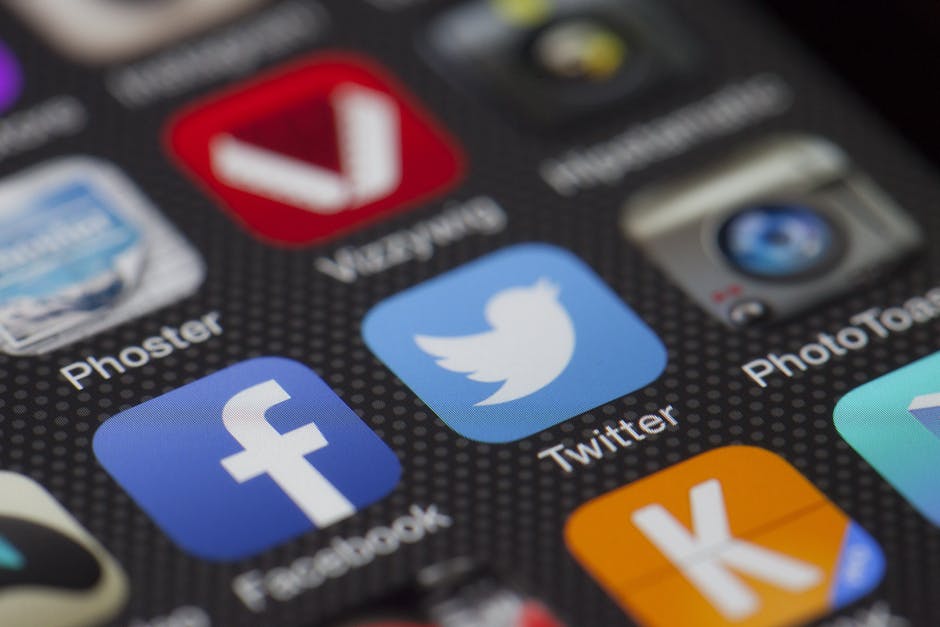
People have never had access to so many amazing tools for connecting with organizations and services that can inspire them to achieve incredible things. Not so long ago, “consumers” were out there. Marketers needed to learn about their customers and their preferences from “the channel,” the sales team, or from expensive market research. They needed to be recruited through retail or sales. It was hard to know much about them as individuals. Today, your customer holds you in her hand. Texts you. Tweets you. You are the button she pushes. You are the apps she launches. You are the tool she uses to get from here to there. Physically. Emotionally. Mentally. You are your customer’s utility. Today, consumers have unprecedented direct access to the organizations that serve them. Equally, companies have unprecedented direct access to their customers and prospects. The direct age is the age of interactive selling. It’s the age of collaboration. It’s also the age of social customer service. If your service and your story works best for inspiring action in the customer, and if that action becomes habit, then you win.
We inspire greatness in individuals and in the companies that serve them through great direct experiences that inspire action.
(more…)
By
Team DIGO | 11/17/2016 | in
By Mark DiMassimo
Our clients hire us to drive brand value up while driving cost-per-acquisition down.
Basically, they need to exceed revenue targets (i.e. sales) while they lay the groundwork for outsized growth – that’s what I call Big Brand.
For some that are reliant on direct mail for a large portion of the new customer acquisitions, this means first making the direct mail work a lot better.
Simultaneously, we work to shift the locus of acquisition to the digital channels where we know we can generate more response – more sign-ups, applications, accounts, customers, clients, recruitment, leads, sales, etc. – for fewer dollars.

In fact, we’ve found that we can so dramatically lower the cost of acquiring a new customer that businesses and brands are dramatically transformed. Promising start-ups become hot growth-stage companies. Mature companies in “tired industries” become hot turnaround stories.
And here’s the thing – we accomplish all of this with a managed level of risk. We test, before we roll out. We only move the real dollars after a strategy has proven to outperform the old strategy. We remain agile and optimize our mix on a daily basis, reporting and meeting with clients weekly to discuss and make the decisions that make all the difference.
Of course, there are internal communications issues, political challenges, vendor conflicts and other considerations that can interrupt the process of creating a dramatically outperforming marketing mix. Because this is all we do, we know those waters very well and we can help navigate while you steer, Captain.
Then we help our clients layer in social-led acquisition, mobile-driven brand direct marketing and content-fueled response marketing. We’ve been scouting those waters for over a decade as well.
Let’s talk more about this. Tweet me at @markdimassimo or shoot me an email at mark@digobrands.com.
Less direct mail. More digital. Onward!
By
Team DIGO | 09/16/2016 | in
By Tom Christmann,
A lot of our clients here at DiMassimo Goldstein are direct-model. I know. I know. That sounds awful, right? That word — “direct!” — strikes fear in the hearts of us modern marketers. But that’s because many of us are thinking about it from the wrong side. Sure, direct-model brands sell directly to consumers. And they have for hundreds of years. This has led to some of the worst advertising in the history of advertising. The Snuggie. The Clapper. Encyclopedia Brittanica.
But think about direct-model consumers. The ones who keep coming back, that is. They are more apt to feel like they’re part of the brand. Like they’re in a club. Maybe it’s a Dollar Shave Club. Or maybe they’re season ticket holders to a sports team. (Yes, sports teams are direct-model businesses.) Or maybe they’re Tesla drivers. Or BMW drivers.
Direct-model consumers are also more willing to want to be a part of the marketing message. In fact, they take it upon themselves to be a part of it. On YouTube. On Instagram. On Twitter. And, while you can’t script what they say, you can harness them to craft the right message for prospects who might be just like them but haven’t tried your brand yet.
That’s just what we did for Weight Watchers this year. They wanted to celebrate their members losing 15% more weight on the new Beyond The Scale plan. But more importantly, they really wanted people to notice that there was a new Beyond The Scale plan. So we sent out a package to key members. In it was a rough script based on things we’d heard on the internet: How the change to the new plan was scary. And how at first they didn’t like it. And, finally, how it worked. Of course, we didn’t force them to read the script. We also asked them to tell their own weight loss stories. And to tell us what foods they loved the way Oprah famously loved bread.
Were we crazy? We were asking a bunch of non-directors to film themselves using smartphones and webcams. We had no idea what we’d get back. We even asked them to capture footage of themselves doing exercise and cooking healthy foods. This is what production companies call “B-Roll” because it generally goes under voice-over and is used to give the film a wider range of visuals. Were they ready for this?
Of course, we had cast real consumers before. We had made documentaries about them. We had done testimonials. We had even used phone interviews as the voiceover on a campaign with real traders for our Tradestation client. But we had never handed over the whole production to them.
But guess what? It worked.
Weight Watchers – It Worked :30 from DiMassimo Goldstein on Vimeo.
Not only did they know how to frame the shots and do multiple takes (thank you selfie culture), they loved every minute of it. In the end, we had a spot featuring real consumers (some were even famous YouTubers) that actually felt real. We had people sharing and liking the spot because they recognized friends and people they followed on social media. And it literally cost zero dollars to shoot. Zero dollars. Best of all, when we edited it together with music, it truly felt like the celebration of real success we had always wanted.
We started joking that maybe we had created a new genre of ad. But what would we call it? Ladies and gentlemen, DiMassimo Goldstein presents: The Selfifesto®!
So, how are you engaging your customers in your advertising? Let’s chat. Email me at tom@digobrands.com
By
Team DIGO | 09/09/2016 | in
By Mark DiMassimo
Unilever recently announced its purchase of Dollar Shave Club for a cool billion dollars in cash, and now our mobile devices are buzzing with prospective clients beseeching us…
“Dollar Shave Club Us, Please!
Well, I’m not one to say, “I told you so!” But, I’m going to make an exception this time.
I’ve been talking up Dollar Shave Club for the past four years. In the beginning, when the company’s launch video went viral, people thought I made a lot of sense. Six months later, they thought I had fallen behind the times, and within a year many suspected I had developed a troubling obsession with a quirky little mail order outfit.
But, I kept at it. I wrote a case study on Dollar Shave Club, showing how the company had perfectly executed all the Ten Signs of an Inspiring Action Company.
I interviewed Dollar Shave Club’s creative director, Alec Brownstein, for my Inspiring Action podcast.
I wrote about the company in at least six different blog posts and posted about them frequently on social networks, imploring marketers to learn what Dollar Shave Club exemplified: how to drive up brand value while driving down cost-per-acquisition.
Why the passion? Here’s why:
1) Dollar Shave Club showed us how a tiny company with a social-led brand response acquisition strategy can take share from giants. (Proctor & Gamble’s market cap is something like $232 billion!)
2) Dollar Shave Club showed us that the direct economy is taking over, and the billion dollar purchase shows us that the Unilevers of this world know it too.
The Wall Street Journal said, “Dollar Shave Club’s direct-to-consumer model gives Unilever unique consumer data and insights, according to the Wall Street Journal.”
According to Bloomberg, Unilever and P&G are masters at traditional marketing, mostly offline, but they struggle with the direct-to-consumer brand-building at which upstarts like Dollar Shave Club excel.
“These startups conduct authentic-seeming conversations with customers over social media, while the consumer products conglomerates take to Twitter and Facebook mostly to address customer complaints,” said Ryan Darnell, a principal at Basset Investment Group, which invests in such e-commerce startups as luggage seller Raden.
3) Dollar Shave Club showed us that the ultimate role of social-led, mobile-driven marketing is to drive down overall cost-per-acquisition while driving up brand value. They weren’t free media purists. They bought TV commercials and other paid media, and they optimized the efficiency and impact of the mix.
4) Dollar Shave Club showed us where the jobs are going, and what the modern definition of lean is. According to the New York Times story, $1 Billion for Dollar Shave Club: Why Every Company Should Worry, “The deal anecdotally shows that no company is safe from the creative destruction brought by technological change. The very nature of a company is fundamentally changing, becoming smaller and leaner with far fewer employees.”
5) Dollar Shave Club built a real brand because they thought of brand in the largest sense – Big Brand — not just as logos and standards, but as the entire customer and market experience. According to Bloomberg, “The key to Dollar Shave Club’s appeal is not so much its online prowess but the fact that it built a powerful brand in four years.”
6) Dollar Shave Club exemplifies the Ten Signs of an Inspiring Action Company, which mark brands that tend to outperform in driving sales growth and brand value. The company knew what it was against – ridiculously high priced grooming products for men, starting with shaving. It knew what it was for – affordable grooming you could brag about. Dollar Shave Club’s leaders knew what their target aspired to be and do – well-groomed and smart, not cheap and face-nicked. And they knew their devotees loved being members of a cool club with lots of well-designed visual signs of their membership.


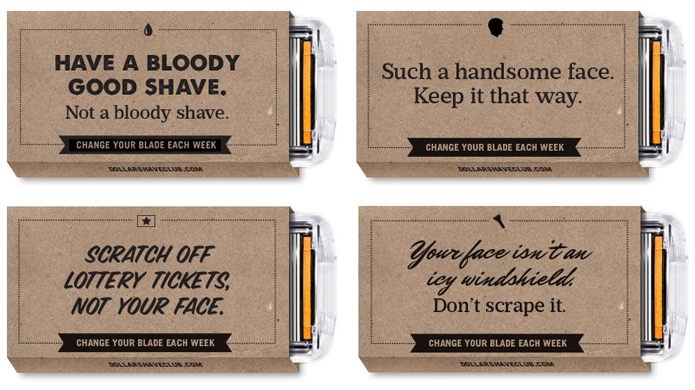
7) Dollar Shave Club used technology and system to shorten the cycle of test and optimization and to speed growth. The New York Times showed how small the company was able to remain by leveraging technology to the fullest, contrasting Dollar Shave Club to the giants that are shedding jobs by the thousands, searching for “efficiencies.”
8) Finally, Dollar Shave Club dramatized their brilliant brand idea with a few iconic actions that got us all talking, sharing and working on promoting the company for free! First, of course, was their brilliant viral video. But notice something about it that is absolutely key – it isn’t just a quirky “viral” video, but it’s also a fully functioning hard-hitting brand response television commercial as well! Later, it would run on television as well. Internet cool? Check. Hard-working sales generator? Check!! Stretches the media budget? Check!!! Generates lots of free media mentions, social shares and word-of-mouth? Check!!!!
The next action that got us all talking was when they started advertising on television – becoming one of the very few “e-commerce” start-ups to do so, and said that their ultimate goal was for HALF of their media to be paid and for half of their media to be earned!
The next thing they did was launch moisturized wipes with an equally funny video that also made the rounds.
And, finally, the sale to Unilever for that iconic number – a billion dollars, in cash no less!
Dollar Shave Club Us, Please! We suppose we’re not the only agency that is receiving that request these days, but we may be the only one that is 100% delighted. Because the main reason I’ve been writing, talking, podcasting and preaching about Dollar Shave Club these past four years is because this is exactly what we do for the excellent, disruptive, direct model, brand response, inspiring action marketers whom we are proud to call our clients.
If you too want to drive brand value up while driving cost-of-sales down, let’s talk.
By
Team DIGO | 11/30/2015 | in
Key #7 of 10 to Inspiring Action: 10 Keys to the Future of Marketing. Download our summary poster of the 10 Keys here.
One of the best things about doing my Inspiring Action Interviews has been the opportunity to have deep conversations with several of my most successful clients.
These are the CMOs that CEOs worship – marketers who have been highly successful again and again.
A common theme came up as we talked about the formative experiences we’d shared.
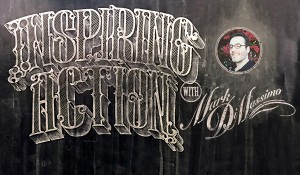
“Since that time I’ve been what you’d call a Brand Direct marketer.” – Ty Shay, CMO LifeLock
“That methodology has become the methodology I’ve applied ever since.” – Leslie Dukker Doty, CMO the Reader’s Digest Association
I first wrote about “brand direct” publicly almost twenty years ago. Since then the direct economy has taken over our lives, and just about every industry has been disrupted by it. This has mostly been a very good thing for me, as our clients over the past two decades have been doing more than their share of the disrupting.
Drowning in data, today’s marketers cry out for coherence. Even with programmatic trading desks, dashboards and optimizations, incremental improvements are only detectible to sophisticated machines.
Significant, meaningful, ongoing improvements in marketing efficiency are still possible, however. They simply require more than mere visual and verbal consistency.
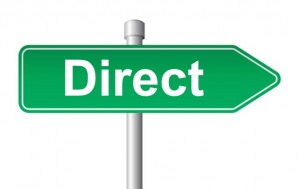
The answer begins with a journey of discovery. The path of that journey is the customer journey itself. Together, we learn to see things from the customer’s point of view, from the prospect’s perspective. We uncover the insight – the inspiring idea – that will change and organize everything.
Then, together, we mine that inspiring idea to accelerate growth by up to ten times. Of course, this also dramatically alters the marketer’s journey!
Let’s alter your journey too!
-Mark DiMassimo, Chief
By
Team DIGO | 09/24/2015 | in
There was once a man who refused to give up smoking until it was proven beyond a shadow of a doubt that smoking caused disease.
He didn’t live long enough to see the proof.
Today, there are direct (digital, mobile, SAAS, subscription, e-commerce, club…) marketers who refuse to improve their marketing success with an insight-driven multi-channel strategy until the perfect attribution model has been developed.
Every day, another one is buried by a marketer with a more reasonable measure of proof.
Is overall marketing efficiency your ultimate measure? Is making one dollar of marketing spend return two or three or four times as many customers your objective?
If so, you are an optimizer.
If you prefer perfectly attributable though small gains in discrete channels, then you’re an incrementalist.
Optimizers eat incrementalists for lunch.
Sometimes, in very big places, incrementalists work in the middle of a pyramid with optimizers at the top. Even so, they can only swim so far up before they hit a ceiling. Too late, they find that the open market is not a very friendly place for an incrementalist.
Why do incrementalists do it to themselves? Is it because they are trading upside for certainty? Is being sure more valuable to them than being successful? Is being right worth more to them than results?
Or did they just swallow a less intelligent idea of what it is a marketer is supposed to do?
Well … enough musing about the incrementalists, much as I would like to convert as many of them as possible to a life of success beyond explanation.
We are for the optimizers.










